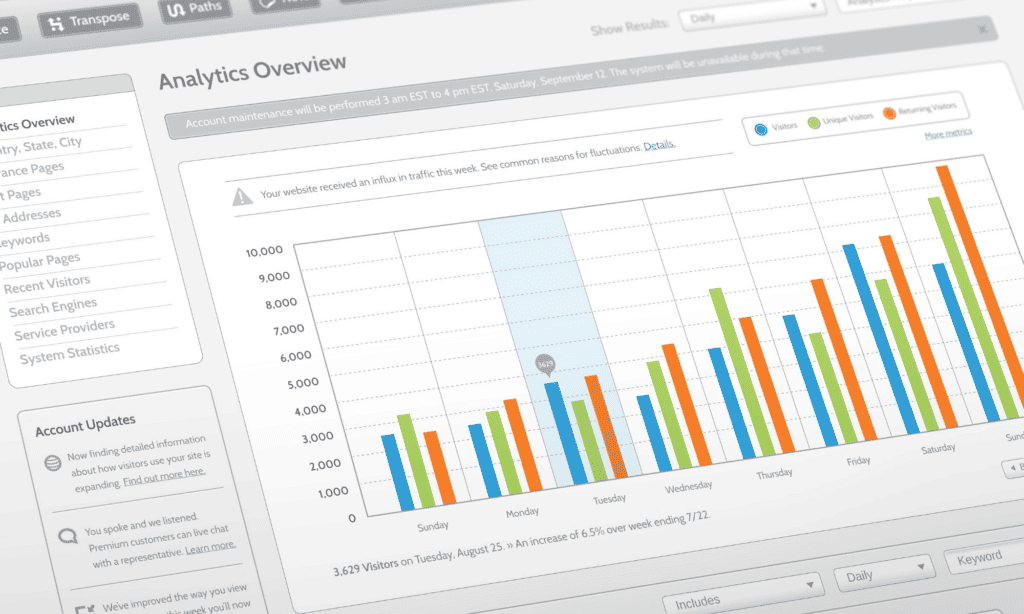Introduction
In today’s digital age, having a strong online presence is crucial for businesses and individuals alike. Your website serves as a virtual storefront, and the content it offers plays a vital role in attracting and engaging visitors. High-quality website content can not only drive traffic to your site but also establish credibility, build trust, and ultimately convert website visitors into customers or loyal clients.
This article will provide you with a comprehensive guide on how to write effective content for your WordPress website. We will walk you through the essential steps and best practices that will help you create engaging, informative, and SEO-friendly content to maximize the impact of your online presence.

1. Understanding Your Target Audience
Before diving into writing content, it is essential to understand who your target audience is. Conduct market research to identify the demographics, interests, and preferences of your potential visitors or customers.
Once you have identified your target audience, delve deeper into their needs, challenges, and interests. Consider the questions they may have, the problems they want to solve, or the information they seek. Understanding their motivations and pain points will help you create content that resonates with them.
2. Define Your Website’s Content Goals
Every website has specific goals it aims to achieve. These goals could include generating leads, increasing website sales, driving traffic, or providing valuable information. Clearly define what you want your website to accomplish, as it will shape the type of content you create and the calls to action you include.
Once these goals are established, identify the actions you want your visitors to take. Do you want them to make a purchase, sign up for a newsletter, download a resource, or contact you for more information?
Your website’s goals must be measurable. This way, you wouldn’t be running blind. Instead, you’ll be able to see how far you’ve gone towards achieving your goals, assess the effectiveness of your content, and make data-driven improvements.
3. Conducting Keyword Research
It doesn’t matter if you have the best content goals and method of achieving them, if no one sees your content, it’s useless. This is why keyword research is important. It gives insight into you the terms and phrases your customers use. By incorporating relevant keywords into your content, you significantly improve your website’s visibility in search engine results and attract organic traffic.
There are several tools most of which work seamlessly with your WordPress website that can assist you in conducting keyword research. Some popular examples are Google Keyword Planner, SEMrush, and Moz Keyword Explorer. Additionally, analyzing competitor websites and leveraging social media trends can provide valuable keyword ideas.

Once you’ve been able to identify relevant keywords that work with your content goals, create content around them. Focus on long-tail keywords as they are more specific and less competitive meaning, you have a better chance of ranking well for them. Avoid keyword stuffing and instead, incorporate these keywords naturally throughout your content.
4. Structuring Your Content
A compelling headline
The headline is the first thing readers see, so it needs to grab their attention. It should also contain a relevant keyword for improved visibility. This is especially relevant for an effective landing page.
Creating a clear and engaging introduction
The introduction sets the tone for the rest of your content. It should provide a clear overview of what the reader can expect and why it is relevant to them. Hook them with a captivating opening sentence and present a concise summary of the key points you will cover.
Organizing content with headings and subheadings
Break down your content into sections using headings and subheadings. This not only helps readers navigate through the information easily but also improves the scannability of your content. Use descriptive headings that accurately represent the content of each section.
Using bullet points and numbered lists
When presenting information that can be categorized or listed, consider using bullet points or numbered lists. This helps to break up dense paragraphs and makes the content more visually appealing and easier to digest. Bullet points also draw attention to key points or benefits.
Incorporating visual elements (images, videos, infographics)
As we all know, web design has a direct affect on marketing. Visual elements can greatly enhance the impact of your content. Incorporate relevant images, videos, infographics, or diagrams to illustrate concepts, engage readers, and break up text-heavy sections. Visuals not only make your content more appealing but also aid in conveying information effectively.

5. Writing Engaging and Informative Content
Maintain a conversational tone
Write in a conversational tone that feels natural and relatable to your target audience. Avoid using jargon or technical language unless necessary, and strive to connect with readers on a personal level. A conversational tone helps build rapport and keeps readers engaged.
Keep your sentences and paragraphs short
Let’s face it, generally, people have short attention spans, and sadly, it’s only getting shorter. This has resulted in many online readers skimming through content. So it’s important to keep your sentences and paragraphs concise. Break down complex ideas into shorter sentences and paragraphs to improve readability. Use straightforward language and avoid unnecessary fluff and filler words.
Use subheadings for scannability
Subheadings are a great way to organize your content. However, they also make it easier for readers to scan and find relevant information quickly. Each subheading should provide a clear preview of the content that follows. This encourages readers to dive deeper into specific sections that interest them.
Incorporate storytelling techniques
Storytelling is a powerful tool for engaging readers and making your content memorable. Weave narratives, anecdotes, or case studies into your content to illustrate points or evoke emotions. Stories help create a connection with your audience and make your content more relatable and compelling.
Provide accurate and up-to-date information
Ensure that the information you provide is accurate, reliable, and up-to-date. Double-check facts, statistics, and references before publishing your content. Providing accurate information not only builds trust with your audience but also positions you as an authority in your field.
6. Optimize Content for SEO
Optimizing your content for search engines is not just important but also necessary for improving its visibility. Here are some tips to note.

- Understand the importance of on-page SEO elements such as meta tags (title tags, meta descriptions), URLs, and alt text for images and use them appropriately.
- While keywords are important for SEO, you should use them naturally within your content. Avoid keyword stuffing, as it results in a nasty reading experience. Instead, focus on creating valuable and informative content that naturally includes relevant keywords.
- Craft descriptive and compelling meta titles and descriptions for your web pages.
- When adding images or multimedia elements to your website, optimize them for search engines. Use descriptive file names, include relevant alt text that describes the content of the image, and compress the files to ensure fast loading times. Optimized visuals not only improve SEO but also enhance the overall user experience.
- AI content generators can be a double-edged sword for SEO. On one hand, they can help create engaging and relevant content for websites and blogs. On the other hand, they can also produce low-quality and duplicate content that can harm the ranking and reputation of the sources. AI content generators should be used with caution and ethical standards, and not as a substitute for human creativity and expertise.
7. Formatting and Readability
Utilizing white space effectively
Yes, white space or space is important on your webpage. It helps to enhance readability and the overall aesthetics of the site. So, use ample white space, add them between paragraphs, under headings, and images to give your content room to breathe. This creates a clean and organized layout that encourages readers to engage with your content.
Choosing appropriate font styles and sizes
Select font styles and sizes that are easy to read on various devices and screen sizes. Since most use their mobile devices, it is important to optimize your content on a mobile device. This is quite easy to do with WordPress. Ensure you stick to standard web fonts and that the font color contrasts well with the background. Also, you should maintain consistency in font size, color, and style.
Testing readability with tools
Use readability tools, such as the Flesch-Kincaid Readability Test or the Readability Score, to assess the readability of your content. These tools analyze factors such as sentence length, word complexity, and readability levels. Aim for a readability score that matches your target audience’s reading ability, although a lot of good content creators will tell you that if the average person can not follow your content, you still have some work to do.
8. Writing Calls-to-Action (CTAs)
Ah yes, the all-time favorite “calls-to-action”. CTAs on your website are essential for guiding your visitors to take desired actions. These actions can range from making a purchase and subscribing to a newsletter to filling out a contact form. CTAs encourage your visitors or customers to engage further with your content. Clearly defined and strategically placed CTAs can significantly impact conversion rates.
When creating CTAs, use concise and action-oriented language that communicates the benefit or value to the user. They should be visible and stand out in a good way of course. This can be done by using contrasting colors or buttons, to attract the readers’ attention.
Once you have your CTA, place them strategically throughout your website, without disrupting the flow of your content. Position CTAs where they naturally fit within the context of your content and make them easily accessible. For example, include CTAs at the end of blog posts, within product descriptions, or in prominent areas of landing pages. It is also a great idea to test different variations and positions of CTAs to determine which ones resonate best with your audience.
9. Proofreading and Editing
So you have great content, positive CTAs, and great images. Good work. Before you publish your content though, conduct a thorough proofreading process to eliminate errors and improve clarity. Read through your content multiple times, checking for spelling, grammar, and punctuation mistakes.
Once you read through, you can go one step further by using online tools and checkers Grammarly. You could even enlist the help of a professional proofreader or editor for a final review.
Review your content for coherence and flow. Ensure that ideas are presented logically, paragraphs transition smoothly, and there is a clear progression of information. Make necessary revisions to improve the overall structure and readability of your content.
Maintain consistency in terms of language, tone, and formatting throughout your website content. Ensure that your content aligns with your brand’s voice and tone. This is particularly important because consistency helps readers build trust in your site as it creates a cohesive user experience across your website.
10. Testing and Monitoring
So now, you’ve posted your website content. That’s all you have to do right? Wrong. You now have to monitor your website analytics using a tool such as Google Analytics to gain insights into user behavior, traffic sources, and engagement metrics. Also, respond to user feedback, and comments, as this allows you to interact with and understand how your content is resonating with your audience.

Use the data and feedback gathered to make informed decisions and improvements to your content. Identify areas that need optimization, such as high bounce rates or low conversion rates, and experiment with different approaches to address those issues.
Conclusion
Crafting high-quality website content requires a strategic approach. In this article, we covered the importance of understanding your target audience, setting clear content goals, conducting keyword research, structuring your content effectively, writing engaging and informative content, optimizing for SEO, focusing on formatting and readability, crafting effective CTAs, proofreading and editing, testing and iterating, and the importance of ongoing content optimization and website maintenance.
Remember that creating quality content is an ongoing process. Continuously monitor and evaluate the performance of your content, stay up to date with industry trends and changes in search engine algorithms, and be responsive to the evolving needs and preferences of your audience.
Applying the tips and best practices discussed in this article will help you write compelling, informative, and SEO-friendly content for your website. By consistently providing valuable content that meets the needs of your target audience, you can enhance user experience, and boost engagement.
If you are looking for a web designer in Whitby or the surrounding area, contact us today to find out how we can help you achieve your website goals!

